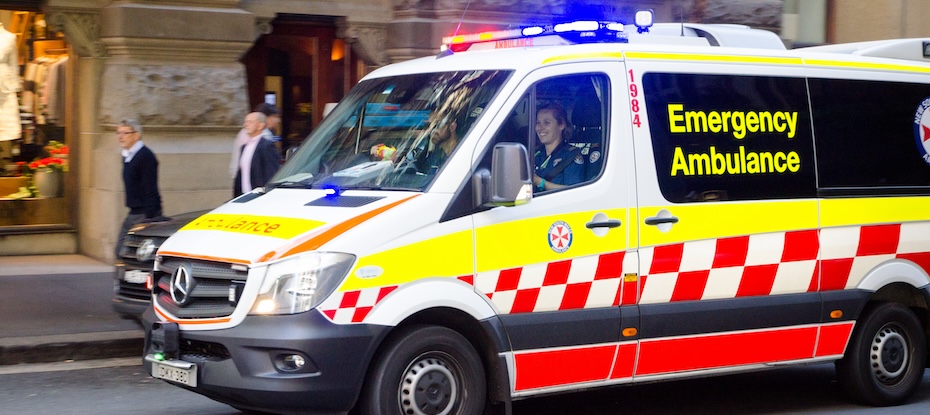
The answer to whether you need ambulance cover isn’t a simple one. It depends on factors such as residential location, age, and concession card eligibility. Some Australians wouldn’t consider going around without ambulance cover due to the risk of a hefty bill while others have never given ambulance cover a second thought because the service is free in their state.
Different Ambulance Providers in Each State
During 2021-22, there were 4.2 million incidents in Australia that required ambulance services. Every Australian state and territory has its ambulance service to respond to these incidents:
Differing Costs in Each State
Many Australians assume that ambulance services are free of charge because Medicare pays the cost. However, this is incorrect. The Commonwealth-funded Medicare doesn’t cover the cost of ambulance transport in any state or territory. Some state governments choose to fund the cost of ambulance transport for residents while other states and territories work on a user pays system.
Free Ambulance Services
Two states in Australia offer completely free ambulance services - Queensland and Tasmania.
Queensland
The Queensland Government fully funds the Queensland Ambulance Service. Queensland residents requiring ambulance assistance or transport are provided with the service free of charge. Even when Queensland residents travel interstate, Queensland residents have no out-of-pocket costs for emergency or non-emergency air or road ambulance transport.
Tasmania
The Tasmanian state government waives ambulance costs in most cases. The website Ambulance Costs If You Live in Tasmania lists where to send the ambulance invoice based on the reason you required an ambulance or circumstance. The reasons include motor vehicle accidents, workplace accidents, and public liability, among other incidents. There are also instructions for Department of Veteran Affairs card holders, international students, resident visa holders, and interstate commuters.
For Tasmanians travelling interstate, they may be covered by a reciprocal arrangement with their home state. Tasmanians and residents of Victoria, New South Wales, ACT, and Western Australia are all covered for emergency road ambulance services while visiting Tasmania. Some interstate travellers have to pay for non-emergency transport and air services, but this depends on the reciprocal agreement.
User-Pays Ambulance Services
Besides Queensland and Tasmania, all other states and territories have a user-pays system for their ambulances. Costs between each ambulance service provider vary widely.
Western Australia
The Western Australian government makes a co-contribution to reduce the fee St John Ambulance charges. There is a fixed rate for emergency response in locations where paramedics are present. A few cases are taken by volunteers in regional and remote areas of the state, which get charged at a variable rate based on distance.
Western Australian residents who reside in regional or remote WA can buy a single or family membership from St John Ambulance to cover the cost of emergency and non-emergency transportation. Health insurance extras cover policy can also cover all or the majority of the cost of an ambulance trip.
Residents over the age of 65 with a valid concession entitlement receive free ambulance services. Those over 65 years old without a concession card and those under 65 with a concession card pay 50% of the ambulance fee.

Victoria
Ambulance Victoria puts the average cost of emergency transport at more than $1,200. Victorian residents can purchase a membership for a single or family to cover the cost of road and air transport, treatment when transport isn’t required, and non-emergency patient transport. Members travelling interstate are also covered for emergency transport to the nearest medical facility, and treatment is also available following a Triple 000 call.
Pensioner Concession Card and Health Care Card holders are entitled to free ambulance transport services in the state of Victoria.
New South Wales
NSW Ambulance has a maximum charge for emergency and non-emergency road, fixed wing, and helicopter transport of more than $7,000. NSW residents pay 51% of the cost of ambulance transport, and the NSW Government subsidises the remaining 49% of the service. The cost is calculated with a call-out fee and a cost per kilometre travelled. For non-NSW residents, there is no maximum charge.
There is no charge for people requiring an ambulance when covered by workers' compensation, motor accidents, or third-party insurance claims, among other instances. Pensioners and concession card holders also receive ambulance transport free of charge.
South Australia
SA Ambulance offers single and family membership ambulance coverage for the cost of emergency and non-emergency transport. Emergency and non-emergency incidents get charged with a call-out fee and a cost per kilometre. Moreover, transport following a motor vehicle accident is not charged, but interstate residents requiring an ambulance in South Australia pay the standard fees.
Australian Capital Territory
ACT Ambulance charges a fixed fee for emergency and non-emergency ambulance services. Residents requiring an ambulance after a road-related incident and several other incidents are exempt. Most pension and health care concession card holders are entitled to free of charge ambulance services.
Northern Territory
St John Ambulance NT provides emergency and non-emergency ambulance services on a call-out fee and a per kilometre fee. St John NT has ambulance cover to protect against the cost of transport and treatment by paramedics.
NT Centrelink Pensioner Concession Card or Health Care Card holders may not be entitled to free ambulance transport.
Private Health Insurance Can Cover the Cost of an Ambulance
Many Australians don’t need to take out separate ambulance cover through their state’s provider because they hold a private health insurance policy that covers the cost of emergency and some non-emergency ambulance transport. Ambulance cover may be available as part of Hospital, Extras, or Extras Cover (Ambulance Only).
Before making any decision, understand what your private health insurance offers for ambulance coverage, as non-emergency ambulance transport may not be part of your policy, for example. People requiring non-emergency transport may need to take out separate ambulance cover. Some funds can offer the option to cover non-emergency ambulance transport, but a co-payment is expected.
Some funds have an annual limit, so for patients who are likely to need multiple ambulance trips in one year, choosing a health fund that offers unlimited, 100% coverage can be worth it. Many funds don’t cover the high cost of ambulance transport via fixed-wing planes, helicopters, or boats. And this can be an important consideration for anyone living remotely or who travels to the region regularly.
Read your private health insurance policy carefully so you’re aware of what you can and can’t claim for ambulance costs. Every policy is often different.

HIF and Ambulance Cover
HIF has expanded its ambulance cover to include unlimited emergency and non-emergency services on all Hospital products, effective from the 1st of April. This comprehensive coverage now accompanies all levels of Extra Cover, ensuring peace of mind for both, emergency and non-emergency transport, excluding transfers from hospital to home, other hospitals, or nursing homes, and off-road or air ambulance services. A co-payment applies for non-emergency services under certain conditions.
All HIF members will enjoy this enhanced ambulance cover with a mere 1-day waiting period for emergency services and a 30-day waiting period for non-emergency transport under both Extras and Hospital products. Please note that road transport is exclusively covered, and waiting periods already served will be honoured, maintaining our commitment to your health and safety.
FAQs
Does Medicare cover some types of ambulance trips?
No one can use their Medicare card to claim for the cost of an ambulance. Those Australians who require an ambulance in a state that isn’t free need a health insurance extras policy or a subscription to their ambulance service provider to avoid the out-of-pocket expense.
What is the difference between an emergency and a non-emergency ambulance?
When a call is received at the triple 0 call centre, the operator will decide if an ambulance needs to be sent to the patient as an emergency (priority 1), urgent (priority 2), or not urgent (priority 3). Emergency and urgent ambulance calls are usually covered by a patient’s health insurance but not urgent trips may require a co-payment from patients.
Will everyone in my family be covered by an urgent ambulance?
With a family extras health insurance policy, all family members listed on the policy are covered for an urgent ambulance. HIF has ambulance cover on all levels of Extras cover.
What is an ambulance call-out fee?
An ambulance service may charge a call-out fee when an ambulance visits a patient and, after an assessment, the patient is not transferred to the hospital. Health insurers can decide which category of ambulance trip is covered.
Do health insurance providers have a waiting period for ambulance coverage?
Most health insurance providers have a waiting period for ambulance trips. At HIF, the waiting period is one day for emergency ambulance calls and 30 days for non-emergency ambulance transport.
For more information see our Ambulance Cover as part of our Extras policies and call 1300 134 060 with any queries.